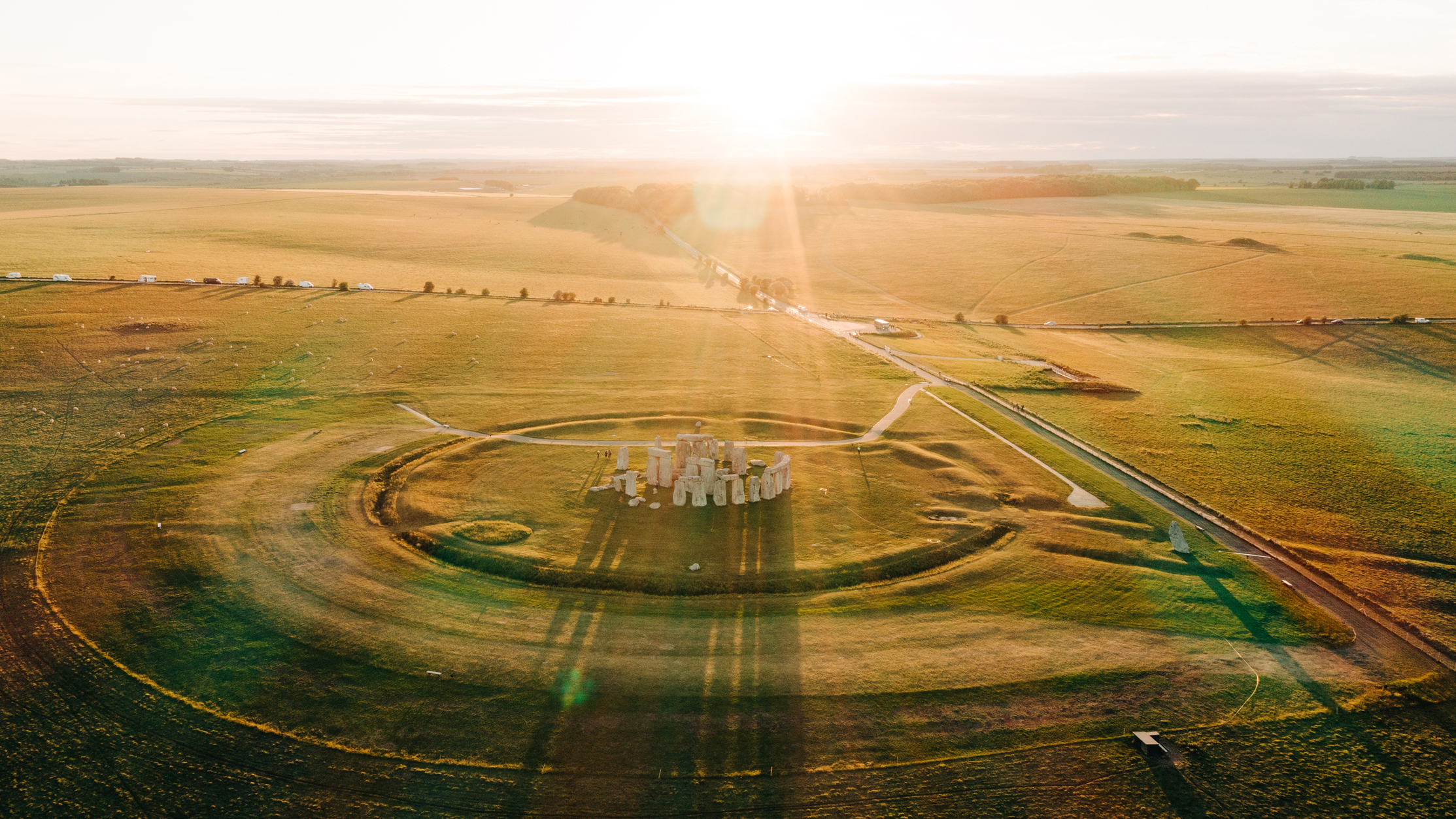Stonehenge: the neolithic site captured in a new light using drone technology
Reuben Wu recently photographed Stonehenge for National Geographic using drones to light the stones from above

Stonehenge has been photographed in a brand new light using modern drone technology and artificial lights. The ancient neolithic site situated on Salisbury Plain in the UK is a popular tourist destination and photography hotspot, so when Chicago-based photographer Reuben Wu was asked to shoot it for National Geographic, he wanted to come up with a way to do it differently.
Merging ancient history with modern technology, Reuben used two cameras, a drone and an artificial light to capture the image of Stonehenge he envisioned. Using what looks like one of the best Sony cameras (we can’t be sure which one exactly), he took a timelapse of the stones as it went from sunset to nightfall and using a medium format camera (which we think could be Phase One) he took stills throughout the shoot.
• Read more: Best DJI drones
With a drone flying around the stones and an artificial light stuck to the end of a telescopic pole, Reuben was able to achieve a unique effect to light the individual stones. Since drones are not permitted to fly above the actual stones, Reuben’s assistant used a 50 ft pole to light them overhead. Reuben also had to consider things such as the position and brightness of the moon and how cloudy the sky was in order to achieve the picture he envisioned.
A post shared by National Geographic (@natgeo)
A photo posted by on
Despite the hundreds of thousands of professional and amateur photos that exist of Stonehenge, this is the first time it’s been shot using this unique method. In an interview with National Geographic, Reuben said, “A lot of the work that I do is based on the idea of showing the familiar in an unfamiliar light. There’s this jarring landscape where you wouldn’t expect that kind of lighting to be, and it shows you something which you may have seen every day in a completely different light”
In order to fly the drone, Reuben had to be granted special permissions from English Heritage who own the site, and the Royal Air Force and he and drone pilot Zac Henderson also had to alert the nearby military base before and after each drone flight.
A lot of planning and preparation went into the three-house shoot which rather unusually started at sunset and ended during the night. Reuben told National Geographic, “Perhaps more conventionally, you’d be waiting for a sunset, or a really kind of perfect angle of light by the sun, in order to capture something in its best light, but for me, I'm trying to actually create this perfect angle of light by using the drone,”
Get the Digital Camera World Newsletter
The best camera deals, reviews, product advice, and unmissable photography news, direct to your inbox!
Since he approached the shoot with the magazine cover in mind, Reuben knew he wanted to shoot it in portrait mode, capturing all the stones in symmetry with the sunset in the background. With careful planning, a talented lighting assistant/drone pilot and a little bit of luck when it came to the weather Reuben was able to create an image that combines the magic of the stones with the powerful capabilities of modern camera technology. In post-processing, Reuben used multiple images taken throughout the night to create the final photo.
Reuben’s composite image will be on the cover of the August 2022 edition of National Geographic but a timelapse version of the cover can be viewed online. For Reuben, shooting Stonehenge was a dream come true and something he has always aspired to do as a child and using his unique approach to lighting, he has managed to photograph it with a brand new twist.
Read more:
Best FPV drones
Best camera drones
Best drones for beginners

Having studied Journalism and Public Relations at the University of the West of England Hannah developed a love for photography through a module on photojournalism. She specializes in Portrait, Fashion and lifestyle photography but has more recently branched out in the world of stylized product photography. Hannah spent three years working at Wex Photo Video as a Senior Sales Assistant, using her experience and knowledge of cameras to help people buy the equipment that is right for them. With eight years experience working with studio lighting, Hannah has run many successful workshops teaching people how to use different lighting setups.
